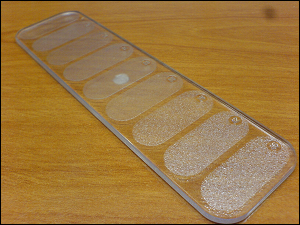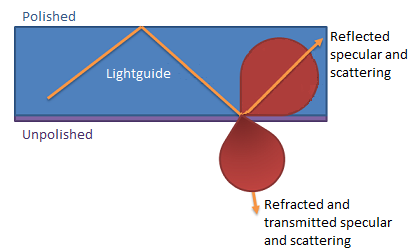Unpolished Surface
The unpolished model is used to simulate any configuration of light arriving on an unpolished surface (transmission or reflection). This modeling is made independently from the materials on each side of the surface.
On the following drawing, you can see a configuration that cannot be modeled by a BSDF. Indeed, with a BSDF model you model a whole film, with its two diopters, whereas, with the unpolished surface model, you can characterize only the diffusion of a single diopter. This type of model is close to the BSDF model, but only the normal distribution is kept, and the model adapts to the underlying material refraction indices using Fresnel formula. Material properties are computed during the simulation according to the VOP of the Ansys software used.

This technology can apply to any unpolished surface, as surfaces treated by electro-erosion, wet etching or sandblasting for instance.

Example of an unpolished surface (diffuse surface).
You can get files either:
from measurements made on materials from libraries like VDI or Charmilles.
from specific measurements made on request.
For specific measurements, contact your Sales representative.
Typical application for this type of surface state is the modeling of a diffuse surface in a light guide.



